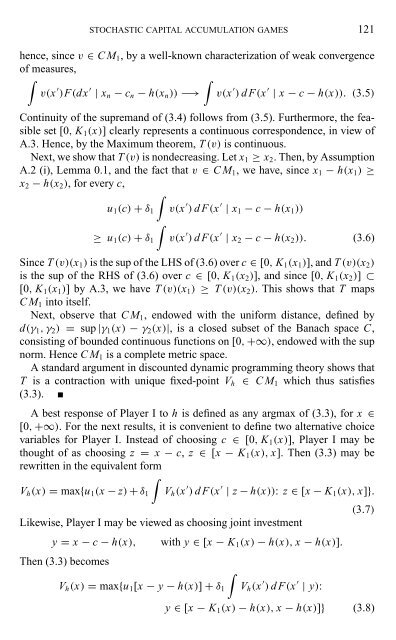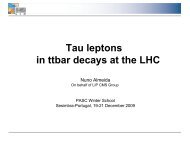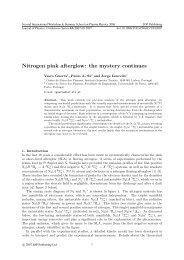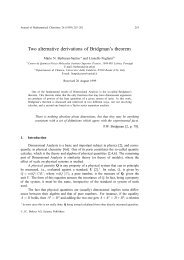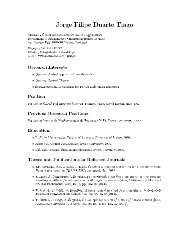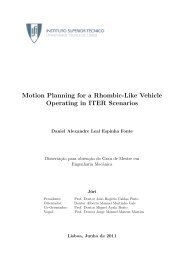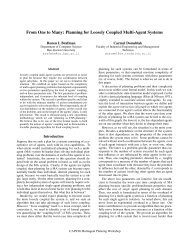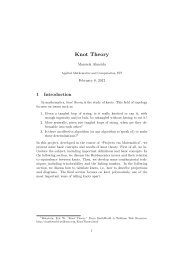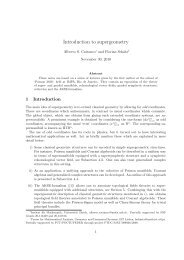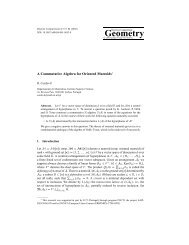Cournot Oligopoly and the Theory of Supermodular Games
Cournot Oligopoly and the Theory of Supermodular Games
Cournot Oligopoly and the Theory of Supermodular Games
You also want an ePaper? Increase the reach of your titles
YUMPU automatically turns print PDFs into web optimized ePapers that Google loves.
STOCHASTIC CAPITAL ACCUMULATION GAMES 121hence, since v ∈ CM 1 , by a well-known characterization <strong>of</strong> weak convergence<strong>of</strong> measures,∫∫v(x ′ )F(dx ′ | x n −c n − h(x n )) −→ v(x ′ ) dF(x ′ | x −c−h(x)). (3.5)Continuity <strong>of</strong> <strong>the</strong> suprem<strong>and</strong> <strong>of</strong> (3.4) follows from (3.5). Fur<strong>the</strong>rmore, <strong>the</strong> feasibleset [0, K 1 (x)] clearly represents a continuous correspondence, in view <strong>of</strong>A.3. Hence, by <strong>the</strong> Maximum <strong>the</strong>orem, T (v) is continuous.Next, we show that T (v) is nondecreasing. Let x 1 ≥ x 2 . Then, by AssumptionA.2 (i), Lemma 0.1, <strong>and</strong> <strong>the</strong> fact that v ∈ CM 1 , we have, since x 1 − h(x 1 ) ≥x 2 − h(x 2 ), for every c,∫u 1 (c) + δ 1 v(x ′ ) dF(x ′ | x 1 −c−h(x 1 ))∫≥ u 1 (c) + δ 1 v(x ′ ) dF(x ′ | x 2 −c−h(x 2 )). (3.6)Since T (v)(x 1 ) is <strong>the</strong> sup <strong>of</strong> <strong>the</strong> LHS <strong>of</strong> (3.6) over c ∈ [0, K 1 (x 1 )], <strong>and</strong> T (v)(x 2 )is <strong>the</strong> sup <strong>of</strong> <strong>the</strong> RHS <strong>of</strong> (3.6) over c ∈ [0, K 1 (x 2 )], <strong>and</strong> since [0, K 1 (x 2 )] ⊂[0, K 1 (x 1 )] by A.3, we have T (v)(x 1 ) ≥ T (v)(x 2 ). This shows that T mapsCM 1 into itself.Next, observe that CM 1 , endowed with <strong>the</strong> uniform distance, defined byd(γ 1 ,γ 2 ) = sup |γ 1 (x) − γ 2 (x)|, is a closed subset <strong>of</strong> <strong>the</strong> Banach space C,consisting <strong>of</strong> bounded continuous functions on [0, +∞), endowed with <strong>the</strong> supnorm. Hence CM 1 is a complete metric space.A st<strong>and</strong>ard argument in discounted dynamic programming <strong>the</strong>ory shows thatT is a contraction with unique fixed-point V h ∈ CM 1 which thus satisfies(3.3).A best response <strong>of</strong> Player I to h is defined as any argmax <strong>of</strong> (3.3), for x ∈[0, +∞). For <strong>the</strong> next results, it is convenient to define two alternative choicevariables for Player I. Instead <strong>of</strong> choosing c ∈ [0, K 1 (x)], Player I may bethought <strong>of</strong> as choosing z = x − c, z ∈ [x − K 1 (x), x]. Then (3.3) may berewritten in <strong>the</strong> equivalent form∫V h (x) = max{u 1 (x − z) + δ 1 V h (x ′ ) dF(x ′ | z−h(x)): z ∈ [x − K 1 (x), x]}.(3.7)Likewise, Player I may be viewed as choosing joint investmenty = x − c − h(x), with y ∈ [x − K 1 (x) − h(x), x − h(x)].Then (3.3) becomes∫V h (x) = max{u 1 [x − y − h(x)] + δ 1 V h (x ′ ) dF(x ′ | y):y ∈ [x − K 1 (x)−h(x), x − h(x)]} (3.8)


